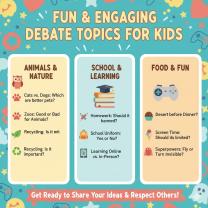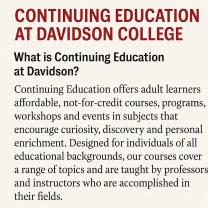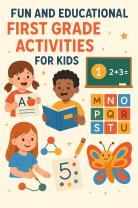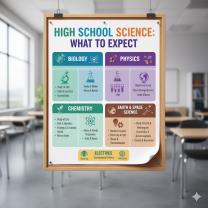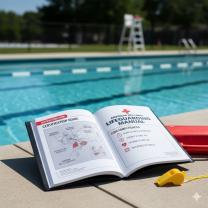What are examples of instructional materials?
Instructional materials are essential tools used by educators to enhance the learning experience of students. These materials are designed to support the teaching and learning process by providing information, examples, exercises, and resources that help students understand and apply the subject matter. Here are some common examples of instructional materials:
Textbooks: Traditional printed textbooks are a common form of instructional material in various subjects. They provide a structured and comprehensive overview of a topic, often including text, images, and exercises.
Workbooks: Workbooks are supplementary materials that typically contain exercises, practice problems, and activities related to the content in textbooks. They provide students with opportunities to practice and reinforce what they've learned.
Audiovisual Materials:
- Videos: Educational videos and animations can be used to visually explain complex concepts, provide real-life examples, and engage students in the learning process.
- Podcasts: Audio recordings, such as podcasts, can be used to deliver lectures, interviews, or discussions, making them accessible for auditory learners.
- Educational Software: Interactive software applications and computer programs can provide simulations, quizzes, and other interactive activities to help students understand and apply concepts.
Digital Resources:
- Websites: Online educational websites offer a wide range of resources, from articles and videos to interactive quizzes and tutorials.
- E-books: Digital versions of textbooks and educational materials, often with additional features like search functionality and hyperlinks.
Visual Aids:
- Charts and Graphs: Visual representations, such as charts and graphs, can make complex data and relationships more accessible and understandable.
- Diagrams and Illustrations: Diagrams and illustrations can be used to clarify concepts, anatomy, processes, and more.
Manipulatives: These are physical objects or tools used in hands-on learning to help students understand abstract concepts. Examples include:
- Counting blocks for math education.
- Models of molecules and atoms in science.
- Geometric shapes for geometry lessons.
Interactive Whiteboards: These digital tools allow educators to project and manipulate various materials, including text, images, and interactive applications, to engage students in the classroom.
Realia: Realia refers to real-life objects or materials that are used to teach or illustrate concepts. For example, in a language class, realia could include actual currency, food items, or clothing from the target culture.
Simulations and Virtual Laboratories: These tools provide a virtual environment for students to experiment and learn, especially in subjects like science and engineering.
Maps and Globes: Geographic materials help students learn about the world's geography, including countries, states, cities, and physical features.
Visual Displays: These include bulletin boards, posters, and displays in the classroom that showcase key information or themes related to the subject matter.
Instructional materials should align with the curriculum and instructional goals, catering to the diverse learning styles and needs of students. They play a significant role in making lessons engaging, interactive, and informative, ultimately enhancing the learning experience.
Instructional Materials: A Diverse Range of Tools
Instructional materials are the resources that teachers use to help students learn. They can be anything from textbooks and worksheets to hands-on activities and digital resources. There is a wide range of instructional materials available, and teachers can choose the materials that best meet the needs of their students.
Exploring Effective Instructional Materials
Effective instructional materials are those that are aligned with the curriculum, engaging for students, and accessible to all learners. They should also provide students with opportunities to practice their skills and learn new concepts.
Here are some of the characteristics of effective instructional materials:
- Aligned with the curriculum: Instructional materials should be aligned with the curriculum that students are learning. This means that the materials should cover the same topics and concepts that students are learning in class.
- Engaging for students: Instructional materials should be engaging for students. This means that they should be interesting, relevant, and challenging. Students should be motivated to learn from the materials.
- Accessible to all learners: Instructional materials should be accessible to all learners, regardless of their learning style or ability. This means that the materials should be provided in a variety of formats and should include accommodations for students with disabilities.
- Provide opportunities for practice and learning: Instructional materials should provide students with opportunities to practice their skills and learn new concepts. This means that the materials should include activities, assignments, and assessments that allow students to demonstrate their understanding.
Case Studies in Innovative Instructional Materials
There are many innovative instructional materials available that are engaging and effective for students. Here are a few examples:
- Flipped classrooms: Flipped classrooms are a type of blended learning where students learn new concepts at home by watching online videos or reading articles. In class, students work on projects, activities, and assessments that allow them to apply what they have learned.
- Gamification: Gamification is the use of game elements in non-game settings. Gamified instructional materials can make learning more fun and engaging for students. For example, students can earn points and badges for completing tasks, or they can compete against each other in leaderboards.
- Project-based learning: Project-based learning is a type of learning where students work on real-world projects. Project-based learning can help students to develop their critical thinking, problem-solving, and collaboration skills.
Adapting Instructional Materials for Diverse Learners
It is important to adapt instructional materials for diverse learners. This means ensuring that the materials are accessible to all students, regardless of their learning style or ability.
Here are some tips for adapting instructional materials for diverse learners:
- Provide materials in a variety of formats: Provide instructional materials in a variety of formats, such as text, audio, and video. This will allow students to access the materials in the way that works best for them.
- Include accommodations for students with disabilities: Provide accommodations for students with disabilities, such as extended time on tests or access to a note-taker. This will ensure that all students have the opportunity to learn and succeed.
- Differentiate instruction: Differentiate instruction by providing students with different levels of challenge and support. This will allow all students to learn at their own pace and reach their full potential.
Impactful Instructional Materials in Education
Impactful instructional materials can make a big difference in student achievement. When students have access to high-quality instructional materials, they are more likely to be engaged in their learning and to succeed academically.
Impactful instructional materials can help students to:
- Develop their critical thinking skills
- Learn complex concepts
- Solve problems
- Collaborate with others
- Communicate effectively
Impactful instructional materials are an essential part of a high-quality education. By providing students with access to high-quality instructional materials, teachers can help them to reach their full potential.








